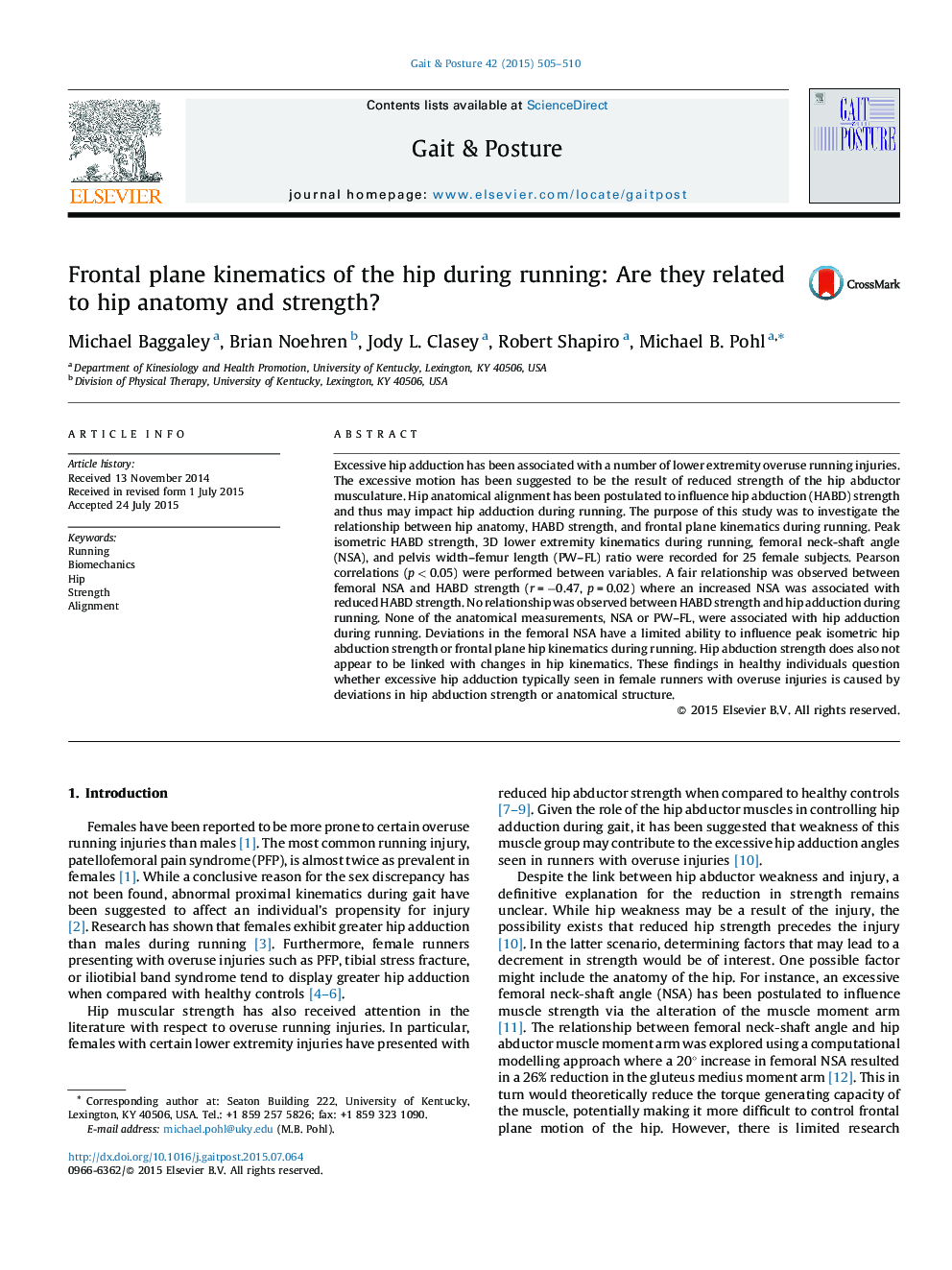| کد مقاله | کد نشریه | سال انتشار | مقاله انگلیسی | نسخه تمام متن |
|---|---|---|---|---|
| 4055744 | 1265628 | 2015 | 6 صفحه PDF | دانلود رایگان |
• Hip adduction during running was not associated with deviations in the neck shaft angle.
• A fair relationship was found between hip abduction strength and deviations in the neck shaft angle.
• Hip adduction during running was not associated with hip abduction strength.
• Hip adduction during running was not linked with deviations in pelvis width–femur length ratio.
Excessive hip adduction has been associated with a number of lower extremity overuse running injuries. The excessive motion has been suggested to be the result of reduced strength of the hip abductor musculature. Hip anatomical alignment has been postulated to influence hip abduction (HABD) strength and thus may impact hip adduction during running. The purpose of this study was to investigate the relationship between hip anatomy, HABD strength, and frontal plane kinematics during running. Peak isometric HABD strength, 3D lower extremity kinematics during running, femoral neck-shaft angle (NSA), and pelvis width–femur length (PW–FL) ratio were recorded for 25 female subjects. Pearson correlations (p < 0.05) were performed between variables. A fair relationship was observed between femoral NSA and HABD strength (r = −0.47, p = 0.02) where an increased NSA was associated with reduced HABD strength. No relationship was observed between HABD strength and hip adduction during running. None of the anatomical measurements, NSA or PW–FL, were associated with hip adduction during running. Deviations in the femoral NSA have a limited ability to influence peak isometric hip abduction strength or frontal plane hip kinematics during running. Hip abduction strength does also not appear to be linked with changes in hip kinematics. These findings in healthy individuals question whether excessive hip adduction typically seen in female runners with overuse injuries is caused by deviations in hip abduction strength or anatomical structure.
Journal: Gait & Posture - Volume 42, Issue 4, October 2015, Pages 505–510
